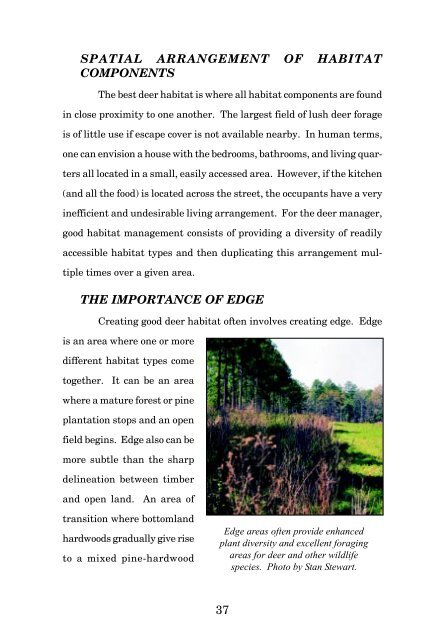Biology And Management Of White-tailed Deer In Alabama
Biology And Management Of White-tailed Deer In Alabama
Biology And Management Of White-tailed Deer In Alabama
Create successful ePaper yourself
Turn your PDF publications into a flip-book with our unique Google optimized e-Paper software.
SPATIAL ARRANGEMENT OF HABITAT<br />
COMPONENTS<br />
The best deer habitat is where all habitat components are found<br />
in close proximity to one another. The largest field of lush deer forage<br />
is of little use if escape cover is not available nearby. <strong>In</strong> human terms,<br />
one can envision a house with the bedrooms, bathrooms, and living quarters<br />
all located in a small, easily accessed area. However, if the kitchen<br />
(and all the food) is located across the street, the occupants have a very<br />
inefficient and undesirable living arrangement. For the deer manager,<br />
good habitat management consists of providing a diversity of readily<br />
accessible habitat types and then duplicating this arrangement multiple<br />
times over a given area.<br />
THE IMPORTANCE OF EDGE<br />
Creating good deer habitat often involves creating edge. Edge<br />
is an area where one or more<br />
different habitat types come<br />
together. It can be an area<br />
where a mature forest or pine<br />
plantation stops and an open<br />
field begins. Edge also can be<br />
more subtle than the sharp<br />
delineation between timber<br />
and open land. An area of<br />
transition where bottomland<br />
hardwoods gradually give rise<br />
to a mixed pine-hardwood<br />
Edge areas often provide enhanced<br />
plant diversity and excellent foraging<br />
areas for deer and other wildlife<br />
species. Photo by Stan Stewart.<br />
37
















